








 |
HISTORY as Edifice
The explosive increase in scientific knowledge at the turn of the twentieth century generated new problems but also stimulated innovative solutions. If people were going to be able to use the rapidly accumulating information, it had to be organized and made accessible. Universities, branches of the federal government, and municipalities constructed great edifices in which library professionals could catalogue and scholars could synthesize this new knowledge.
Leaders in medicine like John Shaw Billings and William Henry Welch also built monumental libraries with the intention of bringing order to the overwhelming proliferation and threatening fragmentation of medical knowledge. Within these libraries, people gathered knowledge, recorded it in bibliographies, indexed it, and made it widely accessible. Welch believe the library was the foundation and unification of all medical knowledge, the history of medicine its synthesis and capstone, and the full-time professional historian the expert interpreter of its collections.
Exterior view of what later became the National Library of Medicine.
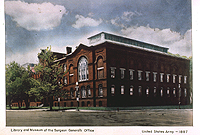 |
Library and Museum of the Surgeon General's Office
Washington, D.C., 1887
Prints and Photographs Call Number: Z AD6 U56 C25 no. 21b
Hand-colored photograph |
John Shaw Billings (1838-1913) sits at a table on the right in the Library Hall.
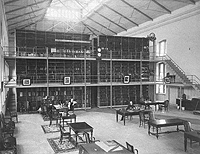 |
Library and Museum of the Surgeon General's Office
Washington, D.C., ca. 1890
Prints and Photographs Call Number: Z AD6 U56 C26 no. FI1
Photograph |
The Welch Memorial Library was opened in 1929. The Institute of the History of Medicine was and is located on the top floor.
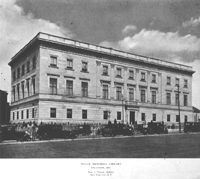 |
Welch Memorial Library, Johns Hopkins University Medical Institutions
Baltimore, Maryland, ca. 1940
Prints and Photographs Call Number: W 19 AM3 J6W7 no. 1
Photographic reproduction |
Written after many years of "prodigious industry," Garrison's Introduction quickly became the standard text and general reference work for the history of medicine in the United States.
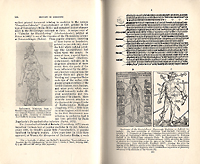 |
Fielding H. Garrison, M.D. (1870-1935)
An Introduction to the History of Medicine, with Medical Chronology, Bibliographic Data and Test Questions
Philadelphia, 1914
NLM Call Number: WZ 40 G242i 1913, pages 134-135
Book |
Garrison had been a junior colleague and then a successor to Billings at the Library of the Surgeon General's Office in Washington, D.C.
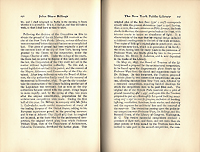 |
Fielding H. Garrison, M.D. (1870-1935)
John Shaw Billings: A Memoir
New York, 1915
NLM Call Number: WZ 100 B598G 1915, pages 296-297
Book |
The Index-Catalogue was one of Billings's great contributions to the bibliography of medicine and eventually evolved into the Index Medicus and Medline.
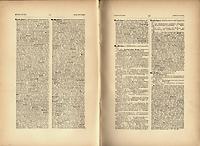 |
Army of the Surgeon-General's Office
Index-Catalogue of the Library of the Surgeon-General's Office, United States Army
Washington, 1888
NLM Call Number: Z 675.M4 I38, page 56-57
Book |
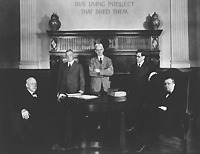 |
The staff of the Institute of the History of Medicine in the Welch Memorial Library, Johns Hopkins University. Seated: William Henry Welch and Henry E. Sigerist. Standing: Fielding H. Garrison, John Rathbone Oliver, and Owsei Temkin
ca. 1932
Prints and Photographs Call Number: Portrait no. 2
Photographic reproduction |
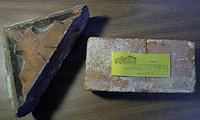 |
Bricks from two of the former National Library of Medicine |
|



